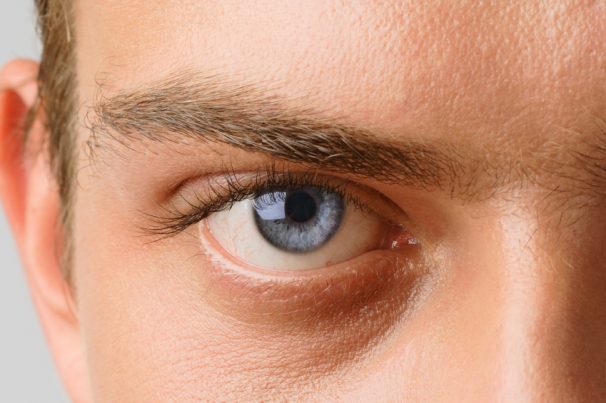
Sjogren’s Syndrome – causes, side effects and treatments at NaturalPedia.com
Thursday, June 21, 2018 by Ralph Flores
http://www.naturalpedia.com/sjogrens-syndrome-causes-side-effects-and-treatments-at-naturalpedia-com.html

Sjögren’s syndrome (pronounced SHOW-grin) refers to an autoimmune disease that attacks glands that produce tears and saliva. This causes a person with the condition to have dry mouth and dry eyes. It can also affect other areas that require moisture like the nose, throat, and skin – in some cases, even affecting the joints and internal organs such as the lungs, kidneys, and nerves.
In the U.S., over four million are diagnosed with Sjögren’s syndrome, with at least nine out of 10 cases being women. In most cases, the condition is isolated; however, some cases of Sjögren’s are accompanied by another autoimmune disorder such as lupus or rheumatoid arthritis. The condition affects the entire body, as symptoms can either progress, remain steady, or even go into remission. People are affected differently by the condition – some only experience mild discomfort, while others have more debilitating symptoms that affect their normal function.
The eponymous disease is named after Dr. Henrik Sjögren who first identified the condition in 1933.

Known risk factors and symptoms of Sjögren’s syndrome
The etiology of Sjögren’s syndrome is unclear. Some experts believe that certain genes make some people at a higher risk of having the condition, while others have observed that certain bacterial and viral infections could also trigger Sjögren’s syndrome.
Certain people have a higher risk of getting the condition. These include:
- People (especially women) over 40 years old
- Those who have a rheumatic disease such as arthritis or lupus
The main symptoms of Sjögren’s syndrome are:
- Dry eyes. People with the condition may experience a burning or itching sensation. In some cases, it may feel like there’s sand on them.
- Dry mouth. Sjögren’s syndrome makes the mouth feel like it’s full of cotton, making speaking or swallowing difficult.
However, other symptoms that accompany the condition include the following.
- Pain and swelling in the joints, sometimes accompanied by stiffness
- Swelling in the salivary glands
- Dry skin and rashes
- Vaginal dryness, for women
- Persistent dry cough
- Extended periods of fatigue
Body systems affected by Sjögren’s syndrome
Some complications brought about by Sjögren’s syndrome include infections in the eyes, mouth, as well as the sinus regions. In some cases, it can also result in bronchitis and vaginitis.
People with the condition may sometimes experience an inflammation of the parotid gland, which can result in dryness in the ducts that drain the gland. This can lead to stones that may obstruct these glands, which may require surgery. Some patients develop lymphoma as a complication of years with Sjögren’s syndrome.
While rare, a severe complication of Sjögren’s syndrome is primary biliary cirrhosis, an autoimmune disease that can scar the tissues in the liver.
Food items or nutrients that may prevent or relieve Sjögren’s syndrome
To manage the symptoms of Sjögren’s syndrome, modifying a person’s diet to one that is low on protein and high in carbohydrates is recommended.
- Avoid polyunsaturated oils (such as vegetable oils) and hydrogenated fats (like margarine and vegetable shortening)
- Increase intake of omega-3 fatty acids, which are found in Alaskan salmon, herring, sardines, walnuts, purslane, and other leafy greens, as well as freshly ground flaxseeds.
- Add ginger and turmeric to reduce inflammation.
Treatments, management options for Sjögren’s syndrome
Currently, there is no available cure for Sjögren’s syndrome, but the following steps can help manage symptoms.
- Avoiding dry, smoky, or windy places
- Managing reading times, as well as TV-watching and screen-viewing times
- Practicing good oral hygiene
- Avoiding alcohol and smoking
Where to learn more
- Autoimmune disease doesn’t have to take over your life
- 8 Reasons Why You’re Thirsty All the Time
- Inflammation and Disease: Friendly Fire or Silent Killer? Taking back control.
- Is Gluten From Grains Making You Sick?
- Green Tea Benefits Type 1 Diabetes and Sjogren’s Syndrome
Summary
Sjögren’s syndrome is an autoimmune disease that attacks glands that produce tears and saliva. It can also affect other areas that require moisture like the nose, throat, and skin, as well as the joints and internal organs such as the lungs, kidneys, and nerves.
Sjögren’s syndrome is more likely to affect women and those with other autoimmune disorders like lupus or rheumatoid arthritis.
Sjögren’s syndrome results in dry eyes and throat.
Sjögren’s syndrome requires modifying a person’s diet to one that is low on protein and high in carbohydrates to manage it.
Currently, there is no available cure for Sjögren’s syndrome.
Sources include:
Tagged Under: Tags: Sjögren's syndrome





